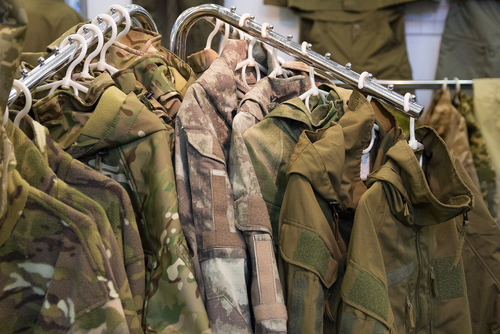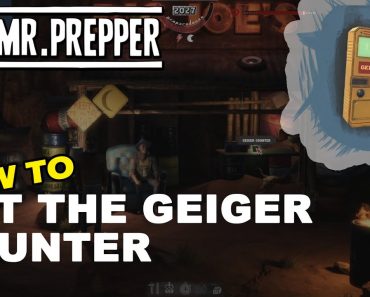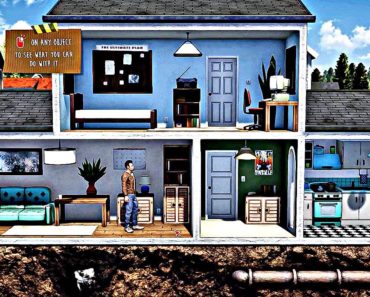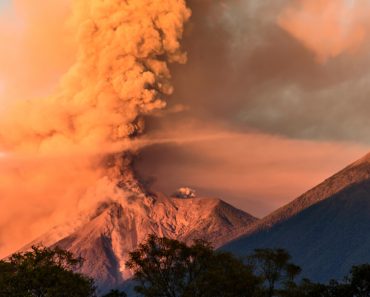In the wilderness, you need to create the perfect illusion of your absence and defeat an animal’s senses if you are hoping for a quick harvest. The ideal camouflage arrangement combines knowledge and skills and your ability to become part of the surrounding environment.
You cannot make yourself invisible if you do not address the hearing, smell, and vision senses. You can’t just pick a camouflage outfit and hope for the best when you are hiding from someone/something or if you go hunting. It would help if you covered all the senses mentioned above to become hidden.
Let’s look at each sense and figure out how to become invisible.
Hearing
Hearing is one of the long-range senses that helps you become aware of what’s going on around you. Even if your vision is impaired, your hearing can still help you figure out what’s happening, and sometimes, you will hear a danger long before you can see it. Vision and hearing are the primary senses for detecting danger for both humans and animals.
Our brain is programmed to alert us and trigger a fight or flight response every time we hear a sound that’s out of the ordinary (the sound of a broken window in the middle of the night, gunshots in the distance, etc.). So, if you want to suppress, or better said, defeat, the sense of hearing of your opponent, may it be human or animal, there are a few things you should do.
Pay attention to your walking, more precisely, how and where you walk. For example, if you place your foot on a twig and it snaps, the sound it makes, which doesn’t seem so important to you, will be heard from afar by many animals. For them, it’s a clear indicator that a large animal made that sound, and they will be on high alert.
Also, if you make your way through dense brush or if things are brushing against your clothing, you will make a distinctive sound as well. It would be best to avoid areas with lush vegetation because you won’t be able to sneak around undetected.
Another recommendation would be to wear soft clothing that wouldn’t make a scratching sound if you brush against something. Wool or polyester fleece clothing is recommended in this case.
If you are done covering your quiet clothing needs, you have to make sure you also bring quiet equipment along. You can use large rubber bands, tape, or pieces of inner tube to hold things together and keep them from rattling. If you carry cans and other items that could rattle inside your backpack and make noise, you can use clothes, rags, or any different fabric to create protective and soundproof layers between the items in your bag.
Also, you shouldn’t talk and keep noise to a minimum even if you are part of a party. If you need to speak with someone, use a hushed whisper or, even better, use hand signals if you must maintain total silence.
Smell
We are not aware of the scents and odor trails we leave behind, and smell is one of the senses few people use for situational awareness. The problem here is that we unintentionally leave signs of our passing, and an animal’s sense of smell can easily distinguish our body odor or the scent of our equipment. Even more, some folks have a developed sense of smell, and a tracker trains himself to use his nose when tracking something or someone.
Defeating your opponent’s sense of smell is somewhat tricky, but there are certain things you can do to minimize your chances of being smelled by someone.
Smoking is a strong no when it comes to stalking prey, and you should leave your cigarettes in your car. I’ve taken part in some hunting trips that had members who are hardcore smokers, and those that couldn’t help themselves would smoke only if there weren’t a breeze blowing, and even then, they would smoke as close to the ground as possible and blow the smoke into the ground.
Avoid washing your clothes with laundry detergents and fabric softeners because these have a specific scent and leave fragrance traces behind. You can use a homemade lye soap that has very little odor to wash your clothes. The same goes for cleaning yourself, and you should get somebody cleaning products that are scent-free.
Pay attention to gasoline when going on a hunting trip. For example, I always fill my gas tank the day before going out hunting. The gasoline vapors will stick to your clothing and shoes, and it will give away that specific scent that, in some cases, might be unnoticeable to you. If you have to stop at a gas section, make sure you aren’t wearing the clothes and footwear you plan on using when hunting.
Eating and cooking are two activities that also create a multitude of odors, and the snacks you bring along to ease your hunger will be smelled a long distance away by animals. The same goes for campfire smoke, and if you wear your hunting clothes around the campfire, you have to “air-dry” them for the next day.
If you fail at masking your smell, you can use a scent eliminator spray since these products can mask scents up to a day and are designed to mask “fear smells” and help hunters get closer to their prey. However, scent control is a complex topic, and there’s no guarantee that these products will work. Most times is a trial-and-error experiment.
Vision
Vision is the primary sense that helps something or someone detect you in their surroundings, and usually, your movement will help them pick you out of your environment. Movement is the first noticeable thing, long before shape or color. After movement, the shape of surrounding things, or more precisely, if something looks out of place, is the next thing your opponent notices.
It would help if you camouflaged yourself but also your equipment. To do this, you have two options: you either put all your effort to look like nothing, or you can pretend you are something from the environment, like a bush or a tree.
To look like something, you can use camouflage patterns that combine a color pallet of your environment with different patterns that replicate tree barks, foliage, and various other patterns explicitly tailored for the environment and season you’re dealing with. This camouflage works best if you are sitting/standing still or leaning up against what you are trying to imitate.
If you are moving and not standing in front of what you are trying to look like, this camouflage will not work. Not to mention that if you try to move across an open field or if your background has a different color palette than one of your camouflages, you will stand out immediately, and every living soul will spot you in no time.
To look like nothing, you can use disruptive camouflage patterns that have two distinctive features. First, a light background has certain dark elements on it (depending on the environment) to create the illusion of depth. And second, there are high contrast colors with different shapes overlaid on the pattern that has the role of breaking up your outline, helping to break your overall shape and make you blend with the surrounding environment. It helps create an abstract shape that looks like it’s part of the landscape.
Another option would be to obstruct your opponent’s vision by creating a barrier between yourself and the opponent. To put it simply, to have something in front of you that conceals your presence and provides you with the advantage of observing everything happening in your field of view and help you act accordingly (take your shot, retreat, etc.). Here, even some bushes between you and what you’re hiding from can provide a tactical advantage.
Some folks like to make their camouflage patterns starting from what’s available on the market, and they can also improvise with what’s available in their environment. They even paint their gear or use all sorts of colored tape and markers to camouflage their stuff.
However, the trick here is to know how to use a palette of colors to match those in your environment. For example, tans and browns work great in arid climates, but you might want to stick with white and grey for an urban environment covered in snow.
Another thing to keep in mind is that you should not use black for your camouflaging experiments and instead try to use dark brown or dark grays since these colors can be easily found in nature compared to black.
There is no recipe for success here, and you need to find the pattern or color scheme that works best with what you are doing and where you plan on doing it. You can imagine needing to constantly adapt your camouflage strategy and color palette depending on your environment and season.
To learn more about how camouflage works, I advise you to read about the early forms of disguise and how the army uses various colors, patterns, and textures for their uniforms and equipment. Also, even hunting books like “Jim Crumley’s Secrets of Bowhunting Deer,” where he shares how the Trebark camo pattern was developed, can provide a great deal of info about the camouflage world.
Concluding
To conceal your presence, you must do whatever you can to break the long-range senses of your opponent, such as vision, hearing, and smell. These are essential requirements regardless of the environment you find yourself in and what you plan on doing.
Your main goal is to use a camouflage setup and avoid specific actions that would reveal your presence and eventually create the illusion that you are not there.





























